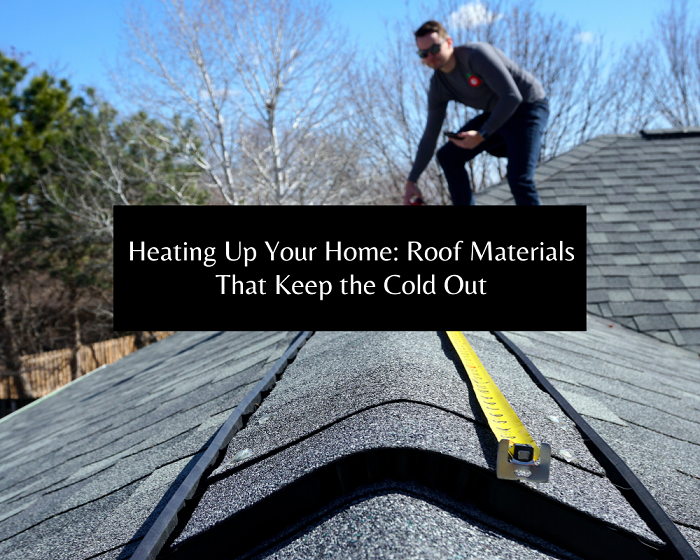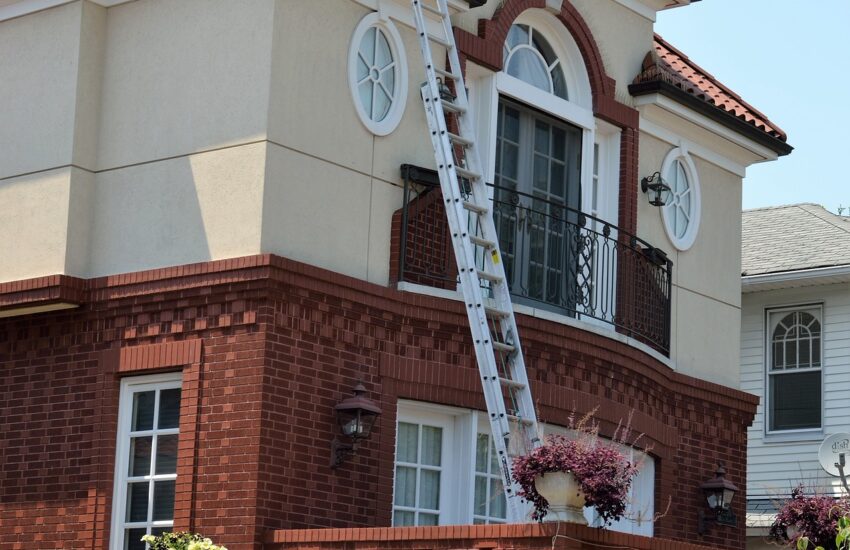Heating Up Your Home: Roof Materials That Keep the Cold Out
As the seasons shift and the cold weather approaches, homeowners everywhere struggle to maintain cozy and welcoming interior spaces. The type of roofing material you select can have a significant impact on your home’s thermal performance, even though insulation is still essential for heat retention.
List of 10 Best Roofing Materials that keep you warm
There are the 10 best roofing materials that keep you warm, such as:
1. Slate: The Enduring Elegance of Natural Insulation
For centuries, roofers have valued slate, a metamorphic rock known for its exceptional thermal insulation and natural beauty. Heat transfer is effectively resisted by its dense, non-porous structure, keeping warmth inside your home during the chilly winter months. Furthermore, the inherent reflectivity of slate reduces heat absorption during warmer months by reflecting the sun’s radiant heat. Slate is the most expensive roofing material in the UK.
2. Metal: A Modern Marvel of Shimmer and Strength
Metal roofing is a great modern option for homes that want to combine performance and style. It is suitable for both warm and cold climates. The roof’s high reflectivity, which varies from 30% to 90% based on the material and coating, prevents it from absorbing excessive heat during the summer. Moreover, metal roofs are lightweight and can last up to 50 years, which reduces the strain on the structural support system. It is one of the strongest roofs for houses in the UK.
3. Clay Tiles: A Timeless Tradition of Thermal Insulation
The remarkable thermal qualities and classic elegance of clay tiles, which have been used to adorn homes for centuries, are what define Mediterranean architecture. Clay retains heat well and is a great material to use in homes in the winter because of its low thermal conductivity. Moreover, clay tiles are fireproof, which is comforting in areas where wildfires frequently occur. It has the average cost among all the tiles in the UK.
4. Composite Shingles: A Symphony of Style and Sustainability
Composite shingles are a popular choice because of their energy efficiency, strength, and appealing appearance. They are composed of a blend of recycled materials and synthetic polymers. Their multi-layered construction, which includes a foam core, gives them excellent insulation. By doing this, you can avoid heat loss in the winter and use less energy. Additionally, the high solar reflectance index of composite shingles reduces heat absorption in the summer. It is the cheapest tile that is used as roofing material in the UK.
5. Asphalt Shingles: A Cost-Effective Option with Improved Energy Efficiency
For homeowners looking for a roof that balances affordability and performance, asphalt shingles are the most popular roofing material in North America and offer an economical option. Energy efficiency has increased with new developments in asphalt shingle technology; some variations have reflective granules that reduce heat absorption in the summer. For many homeowners, asphalt shingles offer a workable and cost-effective solution, even though they are not as thermally efficient as slate or clay tiles. It is the most common type of roofing in the UK.
Read: The Art of Crafting a Beautiful Bathroom
6. Green Roofs: Harnessing Nature for Insulation and Sustainability
Green roofs, sometimes referred to as living roofs, are roofs with vegetation growing on them. This creative method promotes environmental sustainability in addition to adding an extra layer of insulation. As natural insulators, the plants on green roofs moderate extremes in temperature and lower the house’s overall energy usage. In addition, green roofs improve air quality, collect rainfall, and produce aesthetically pleasing, environmentally responsible living spaces.
7. Wood Shakes: Traditional Charm with Natural Insulation
Wood shakes have a classic appearance and offer superior insulation. They can be made from cedar or other hardy wood species. Wood’s inherent qualities aid in temperature regulation, keeping houses cool in the summer and warm in the winter. For homeowners looking for a classic, natural roofing material, wood shakes can be a charming and cost-effective option. Still, they do require regular maintenance to avoid problems like moss growth or decay.
8. Concrete Tiles: A Durable and Energy-Efficient Option
Concrete tiles have become more and more popular due to their energy efficiency and durability. They come in a variety of styles and colors. Concrete’s thermal mass makes it a good insulator against heat and cold because it helps control interior temperatures. Furthermore, reflective coatings are frequently applied to concrete tiles to increase their solar reflectance and decrease heat absorption during hot seasons. Concrete Tiles is the cheapest rooftop in the UK.
9. Solar Panels: Transforming Sunlight into Sustainable Energy
A growing number of homeowners are choosing to go energy-independent by installing solar panels on their roofs, even though they are not a typical roofing material. Sunlight-to-electricity conversion reduces reliance on other energy sources. Homeowners can help conserve the environment while also saving money on energy costs by implementing this sustainable solution. A synergistic approach to attaining warmth and sustainability can be established by combining solar panels with an energy-efficient roofing material.
10. Insulation Upgrades: Enhancing Thermal Efficiency
The insulation layer, which is located beneath the roofing material, is essential to keeping a warm and energy-efficient house. To increase thermal resistance, look into cutting-edge insulating materials like rigid foam boards or spray foam. Your home’s overall energy performance can be greatly improved by upgrading the insulation in the walls and attic, which will guarantee that heat is repelled in the summer and retained in the winter.
Additional Considerations for Warmth and Efficiency
Choosing the right roofing material is crucial for warmth in the winter, but attic insulation, ventilation, and air sealing are also crucial factors. Collectively, these elements enhance overall energy efficiency and reduce heat loss.
Speak with a licensed roofing contractor to find the best insulation plans and roofing materials for your house. Making wise choices for insulation and roofing as winter draws near can result in a warm and energy-efficient house. Using the best materials and energy-saving techniques guarantees comfort, health, and financial savings in the winter.



